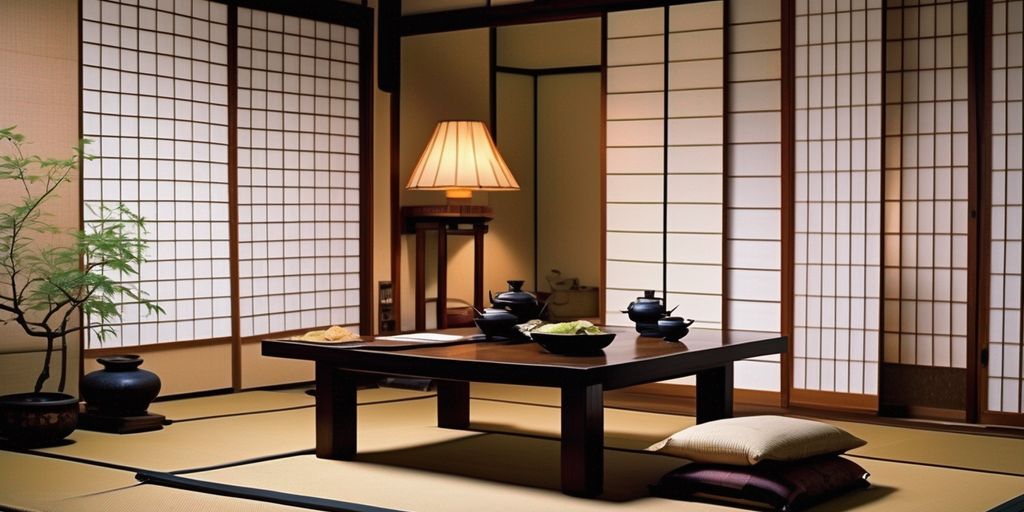In the realm of home design, the impact of cultural heritage is both profound and pervasive. From the structural elements to the aesthetic choices, each aspect of a home can be a reflection of the cultural values and historical influences of the area. This article delves into how local traditions and cultural norms significantly shape home design, offering a deeper understanding of the symbiotic relationship between culture and living spaces.
Key Takeaways
- Architectural styles are deeply influenced by cultural heritage, utilizing local materials and reflecting historical trends.
- Home design features often accommodate cultural rituals, such as spaces for ancestral worship or community gatherings.
- Environmental adaptations and social structures in home design reflect the local climate and communal living arrangements.
- Incorporating local artisan crafts and ethnic motifs enriches the interior design, celebrating cultural diversity.
- Understanding cultural influences in home design can lead to more meaningful and resonant living spaces, bridging past traditions with modern needs.
Architectural Styles Reflect Cultural Heritage

Influence of Local Materials
Local materials are not just a choice but a reflection of the region’s geography and history. Using local stone, wood, or clay, architects can create buildings that are both sustainable and deeply rooted in the area’s cultural heritage. This practice not only supports local economies but also ensures that the architectural style remains connected to its cultural context.
Historical Architectural Trends
Architectural styles are deeply intertwined with the cultural and historical context of a region. From the grand Gothic cathedrals of Europe to the sleek minimalism of modern Japanese homes, each style tells a story of the people and their times. These styles are not static; they evolve with society, reflecting changes in values, technology, and aesthetics over time.
Modern Interpretations of Traditional Designs
In the modern era, architects are blending traditional designs with contemporary needs and technologies. This fusion respects and preserves cultural heritage while making it relevant for today’s use. For instance, incorporating traditional pagoda roofs in modern buildings can provide both aesthetic appeal and functional benefits like improved air circulation.
Rituals and Traditions Influence Design Features

Spaces for Ancestral Worship
In many cultures, spaces dedicated to ancestral worship are integral to home design. These areas are often characterized by altars or shrines where family members can pay respects. The design of these spaces can include elements like incense holders, traditional artworks, and specific color schemes that hold symbolic significance.
Designs for Community Gatherings
Homes are frequently designed with large communal spaces to accommodate gatherings, reflecting the cultural importance of community and social interactions. Features such as open-plan layouts and outdoor meeting areas are common, enabling activities like communal meals and social rituals. These spaces often become the heart of the home, fostering a sense of community and belonging.
Incorporating Ritual Objects in Decor
Decorative elements that carry cultural and spiritual meanings are often incorporated into home designs. These can range from artworks depicting cultural narratives to everyday objects used in rituals. By integrating these elements, designers help to maintain a connection to cultural heritage and ensure that these traditions are passed down through generations.
Cultural Influences on Housing Design and Architecture

Environmental Adaptations
In regions where climate and landscape vary dramatically, housing designs are deeply influenced by the need to adapt to these environmental conditions. Homes are crafted not only for shelter but also to enhance comfort and efficiency, utilizing local materials and traditional methods that have evolved over generations.
Social Structures and Living Arrangements
Cultural norms and social structures significantly dictate the layout and functionality of homes. For instance, extended family living arrangements are common in many cultures, necessitating larger communal spaces and adaptable private areas to accommodate multiple generations under one roof.
Aesthetic and Symbolic Elements
Every culture carries its unique aesthetic and symbolic elements that manifest in home design. These elements often serve as a canvas for expressing cultural identity, heritage, and values. From the intricate carvings and vibrant colors to the strategic placement of windows and doors, every detail can hold cultural significance.
The Influence of Culture on Bangladeshi Home Design

Blending Tradition with Modernity
In Bangladesh, the fusion of traditional elements and modern aspirations is evident in home design. This blend not only reflects the country’s rich historical heritage but also its modern aspirations. The evolving design landscape is a result of historical foundations, conventional elements, and current influences, creating a unique visual narrative of the country’s identity.
Use of Color and Texture
Bangladeshi home design utilizes vibrant colors and varied textures to express cultural identity. Traditional hand-woven textiles and intricate carvings are often used to add depth and cultural significance to the interiors. These elements are not just decorative but are imbued with cultural symbolism that resonates with the local populace.
Spatial Organization in Bangladeshi Homes
The spatial organization in Bangladeshi homes often reflects the social structures and communal lifestyle prevalent in the country. Rooms are typically organized to facilitate family interactions and communal living, with open spaces that promote a sense of togetherness and community.
Cultural and Ethnic Influences in Interior Design

Global Inspirations
The world of interior design is profoundly enriched by global inspirations. Designers draw from a vast palette of cultural aesthetics, from the vibrant hues of Indian textiles to the minimalist lines of Scandinavian design, creating spaces that are not only visually stunning but also culturally resonant.
Local Artisan Crafts
Emphasizing local artisan crafts in interior design not only supports local economies but also preserves cultural heritage. Handcrafted items like pottery, textiles, and woodwork bring authenticity and personal touch to any space, making each design unique.
Ethnic Motifs and Patterns
Ethnic motifs and patterns are more than just decorative elements; they are a celebration of cultural stories and traditions. These designs, whether woven into textiles or carved into furniture, serve as a bridge connecting the past with the present, enriching the aesthetic appeal of interiors while fostering a deeper connection with cultural roots.
How Culture Influences Your Home’s Interior Design

Personal Identity and Space
Interior design is a reflection of culture, history, and identity, shaped by diverse influences from around the world. It’s not just about aesthetics; it’s about creating a space that resonates with the personal stories and values of the individuals who inhabit it.
Cultural Artifacts as Decor
Incorporating cultural artifacts into your home decor can transform a space into a narrative of your heritage and beliefs. These items serve as a bridge between the past and the present, enriching the living environment with layers of meaning and connection.
Fusion of Diverse Cultural Elements
The blending of various cultural elements in interior design not only enhances the visual appeal but also promotes a deeper understanding and appreciation of global diversity. This fusion creates a unique, eclectic environment that is both inviting and enlightening.
The Profound Link Between Home Design and Cultural Values

Design as a Reflection of Values
Home design is not just about aesthetics or functionality; it’s deeply rooted in the cultural values of a society. Design choices are often a reflection of what a community holds sacred or significant. For instance, the use of space can indicate whether a culture values community over individuality or vice versa.
Spaces that Tell Cultural Stories
Every room, every corner of a home can narrate the cultural stories that shape its inhabitants. From the layout of the living room intended for family gatherings to the solitary spaces meant for personal reflection, homes are a canvas for cultural expression.
Intergenerational Influence in Design
The influence of previous generations in home design is unmistakable. Often, homes are designed with a blend of traditional elements that honor the past and modern features that accommodate current lifestyles. This interplay between the old and the new helps maintain a continuity of cultural identity across generations.
Conclusion
In the exploration of how local traditions shape home design, it becomes evident that cultural influences are not just superficial adornments but are deeply ingrained in the architectural and interior choices we make. From the vibrant colors and patterns of Indian textiles to the minimalist spaces of Japanese homes, each design element reflects a rich tapestry of history, beliefs, and social norms. By embracing these cultural legacies, architects and homeowners create spaces that are not only visually appealing but also resonate deeply with personal and collective identities. This acknowledgment of cultural heritage in home design not only preserves traditions but also enriches our modern living environments, making them more meaningful and connected to our roots.
Frequently Asked Questions
How does culture influence home interior design?
Culture shapes home interior design by incorporating traditional materials, colors, and layouts that reflect one’s heritage and values. It can manifest in the use of ethnic motifs, artisan crafts, and culturally significant decor that express personal identity and cultural history.
What are some examples of cultural influences on Bangladeshi home design?
Bangladeshi home design often blends traditional and modern elements, using vibrant colors and rich textures. Spatial organization is tailored to family and social gatherings, reflecting the cultural importance of community and hospitality.
How do rituals and traditions shape home design features?
Rituals and traditions can dictate the creation of specific spaces in a home, such as areas for ancestral worship or large communal rooms for gatherings, emphasizing the cultural values of respect for ancestors and community engagement.
What role do environmental adaptations play in culturally influenced architecture?
Environmental adaptations in architecture reflect the integration of cultural responses to local climates and landscapes. This includes the use of materials that are best suited for the environment and design features that enhance comfort and sustainability.
Can you describe the intergenerational influence in home design?
Intergenerational influence in home design involves incorporating elements that reflect the cultural and aesthetic values passed down through families. This can include furniture, art, and other decor items that tell the story of a family’s heritage and ongoing legacy.
How does integrating cultural elements in design benefit individuals and communities?
Integrating cultural elements in design not only personalizes living spaces but also strengthens community ties and cultural identity. It promotes a sense of belonging and pride, and supports the preservation and celebration of cultural diversity and history.



